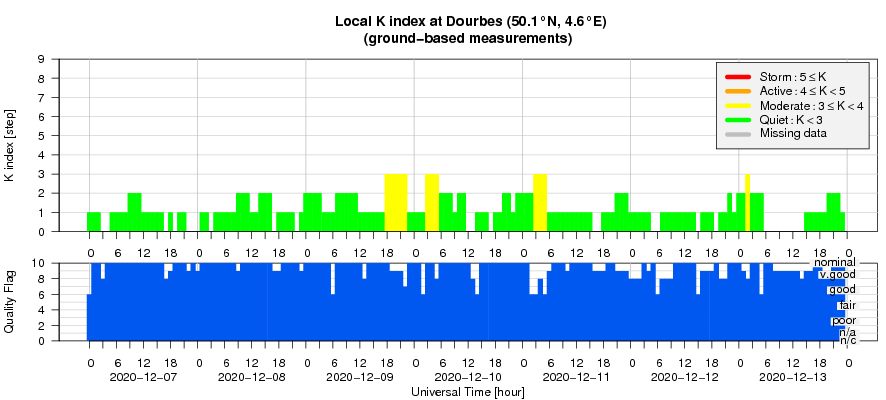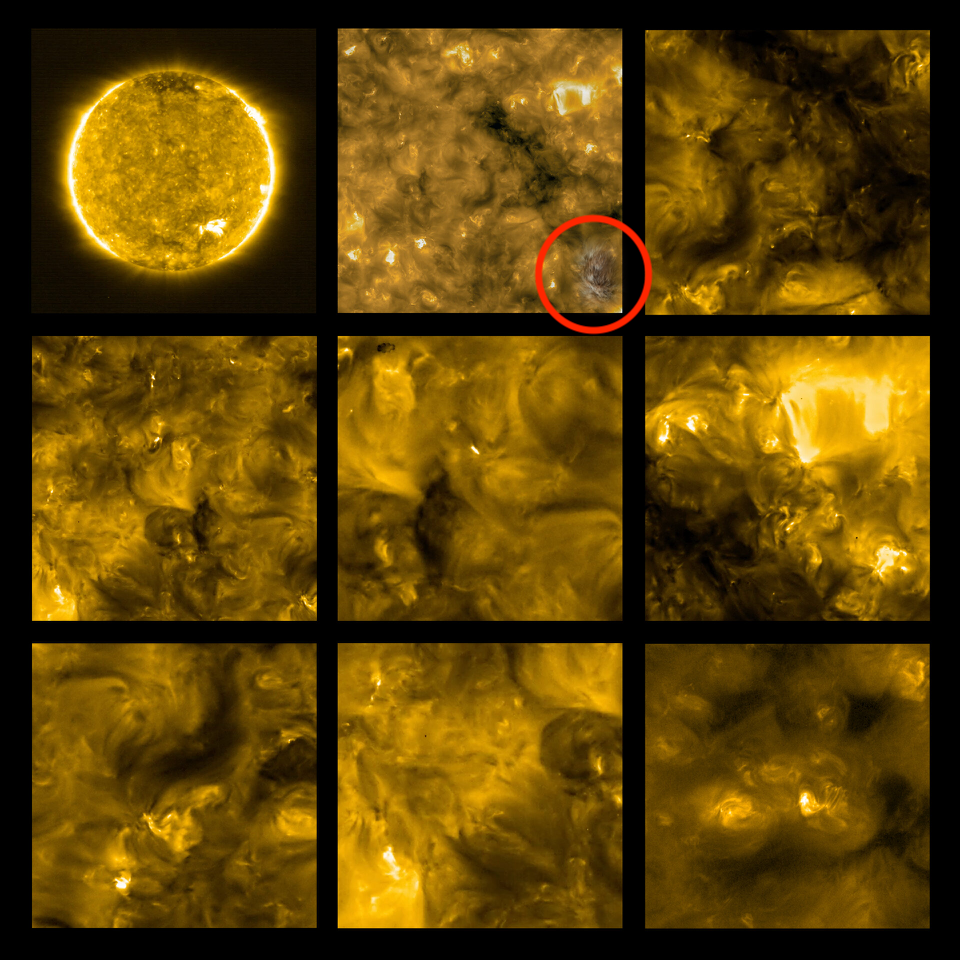- Table of Content
- 1.The 7 December...
- 2.Review of sola...
- 3.The Internatio...
- 4.PROBA2 Observa...
- 5.Review of geom...
- 6.Geomagnetic Ob...
- 7.The SIDC Space...
- 8.Review of iono...
- 9.Not relevant -...
2. Review of solar activity
3. The International Sunspot Number by Silso
4. PROBA2 Observations (7 Dec 2020 - 13 Dec 2020)
5. Review of geomagnetic activity
6. Geomagnetic Observations at Dourbes (7 Dec 2020 - 13 Dec 2020)
7. The SIDC Space Weather Briefing
8. Review of ionospheric activity (7 Dec 2020 - 13 Dec 2020)
9. Not relevant - the solution
The 7 December CME has arrived!
The previous Newsletter reported on a coronal mass ejection (CME) associated with the long duration C7.4 flare from 7 December. See a coronagraphic image from the SOHO/LASCO C2 instrument underneath.
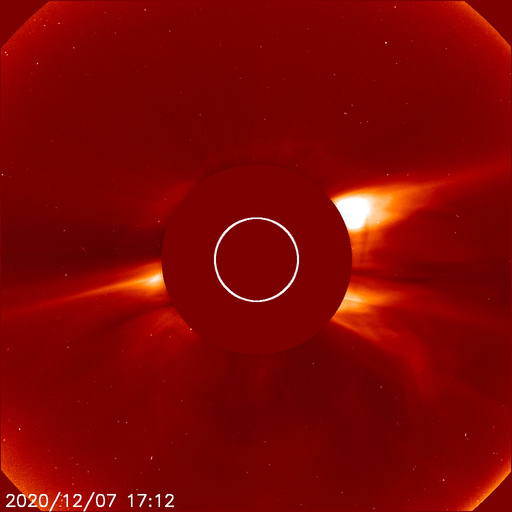
This CME arrived at Earth early on 10 December. The SIDC PRESTO Alert mentions that a shock was seen in the solar wind on 10 December around 01:30 UT marking the arrival of the CME from 7 December. The speed jumped from 450 km/s to 560 km/s and the magnetic field from 6 nT to 16 nT. See the respective yellow and white curves in the DSCOVR solar wind data underneath. As this interplanetary CME did not have long lasting negative (southward oriented) Bz embedded in it (red curve), only unsettled geomagnetic conditions were seen locally (K Dourbes =3) and a single active episode at planetary levels (Kp = 4).
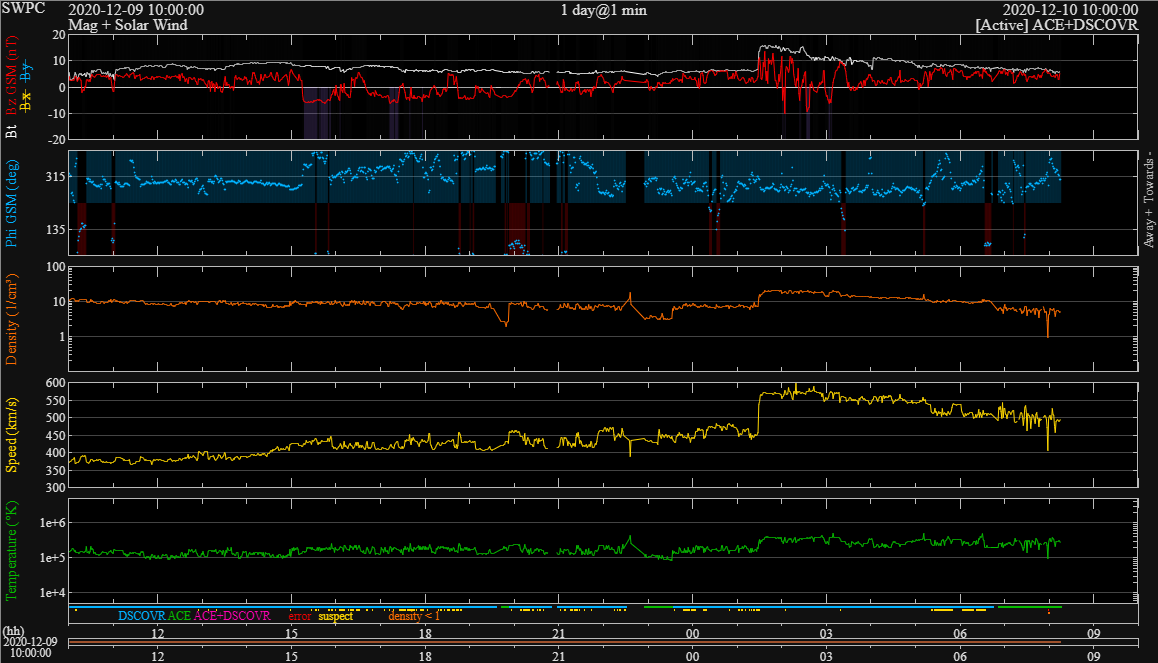
Review of solar activity
NOAA active regions (ARs) 2790 (alpha) and 2791 (beta) were decaying in the beginning of the week. AR 2790 produced a C7.4 long duration flare on 7 December. No other flare larger than B-class occurred during the week. By 9 December, AR 2790 was the only visible AR on the disk.
At the end of the week, 12 December, NOAA AR 2792 (beta) rotated into view from the east limb, as 2790 did the opposite on the west limb.
A full halo CME was first seen by LASCO C2 at 16:24 UT on 7 December, with a speed of 1280 km/s, associated with the long duration C7.4 flare from NOAA AR 2790. A faint backsided full halo CME was seen first at 00:24 UT on 11 December by LASCO-C2 (no effect at Earth).
A faint CME was seen at 19:09 UT on 11 December by LASCO-C2, it erupted from the decayed AR 2791.
An equatorial coronal hole (consisting of several small patches) of negative polarity crossed the central meridian on 6 December.
The greater than 10 MeV proton flux remained below threshold levels throughout the week.
The International Sunspot Number by Silso
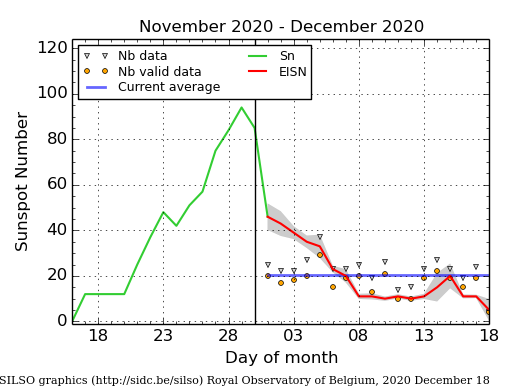
The daily Estimated International Sunspot Number (EISN, red curve with shaded error) derived by a simplified method from real-time data from the worldwide SILSO network. It extends the official Sunspot Number from the full processing of the preceding month (green line). The plot shows the last 30 days (about one solar rotation). The horizontal blue line shows the current monthly average. The yellow dots gives the number of stations that provided valid data. Valid data are used to calculate the EISN. The triangle gives the number of stations providing data. When a triangle and a yellow dot coincide, it means that all the data is used to calculate the EISN of that day.
PROBA2 Observations (7 Dec 2020 - 13 Dec 2020)
Solar Activity
Solar flare activity fluctuated between very low and low during the week.
In order to view the activity of this week in more detail, we suggest to go to the following website from which all the daily (normal and difference) movies can be accessed: https://proba2.oma.be/ssa
This page also lists the recorded flaring events.
A weekly overview movie can be found here (SWAP week 559): https://proba2.sidc.be/swap/data/mpg/movies/weekly_movies/weekly_movie_2020_12_07.mp4
Details about some of this week's events can be found further below.
If any of the linked movies are unavailable they can be found in the P2SC movie repository here: https://proba2.oma.be/swap/data/mpg/movies/
Monday Dec 07
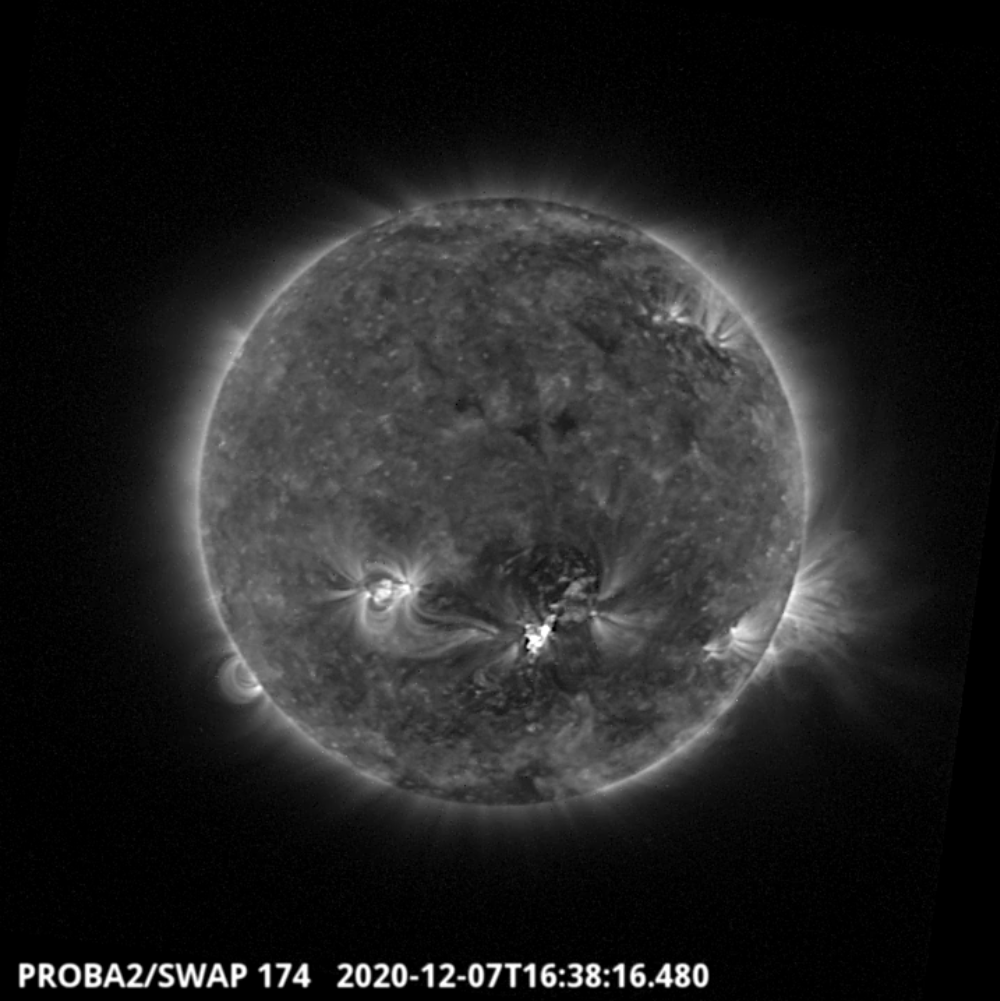
A C7.4 flare was observed by SWAP and LYRA on 2020-Dec-07. The flare occurred near the central meridian in the southern hemisphere of the Sun, as shown in the SWAP image above taken at 16:38 UT.
Find a movie of the event here: https://proba2.sidc.be/swap/movies/20201207_swap_movie.mp4 (SWAP movie) and here: https://proba2.sidc.be/swap/movies/20201207_swap_diff.mp4 (SWAP difference movie)
Review of geomagnetic activity
The week started with the Earth under the influence of a slow solar wind.
On 10 December at 01:34 UT, a shock was observed in the solar wind, marking the arrival of the 7 December halo CME. The speed jumped from 450 km/s to 560 km/s and the magnetic field from 6 nT to 16 nT. It did not have long lasting negative Bz embedded in it, therefore only unsettled conditions were seen locally (K Dourbes = 3) and active at planetary levels (Kp = 4).
Before the shock, and after the ICME passage, the solar wind speed was slightly increased, probably marking the presence of the (weak) high speed stream expected from the equatorial coronal hole.
The rest of the week geomagnetic conditions ranged from quiet to unsettled (K and Kp = 0 - 3)
The greater than 2MeV electron flux remained below threshold levels.
The SIDC Space Weather Briefing
The Space Weather Briefing presented by the forecaster on duty from December 7 to 14. It reflects in images and graphs what is written in the Solar and Geomagnetic Activity report.

A pdf-version: http://www.stce.be/briefings/20201214_SWbriefing.pdf
The movie: http://www.stce.be/briefings/20201214_SWbriefing.m4v
Review of ionospheric activity (7 Dec 2020 - 13 Dec 2020)
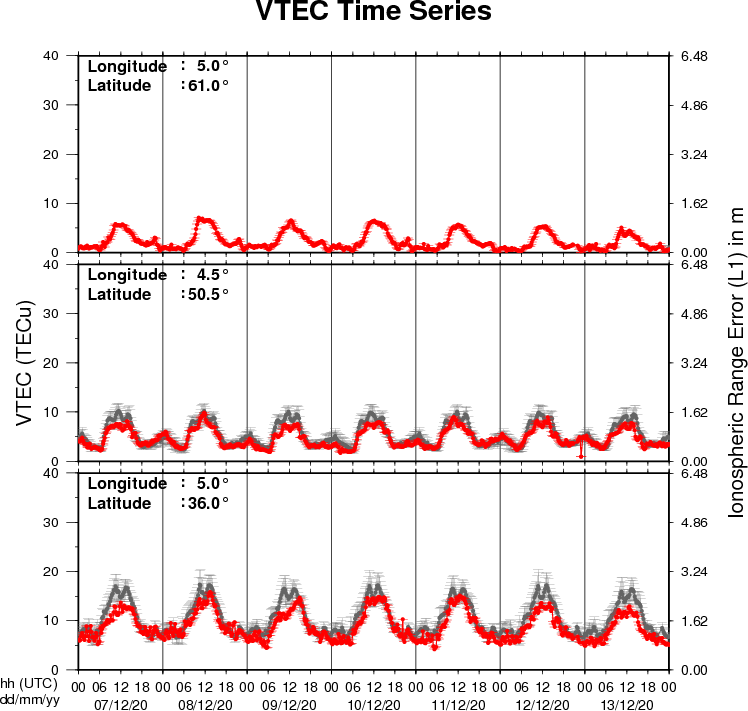
The figure shows the time evolution of the Vertical Total Electron Content (VTEC) (in red) during the last week at three locations:
a) in the northern part of Europe(N61°, 5°E)
b) above Brussels(N50.5°, 4.5°E)
c) in the southern part of Europe(N36°, 5°E)
This figure also shows (in grey) the normal ionospheric behaviour expected based on the median VTEC from the 15 previous days.
The VTEC is expressed in TECu (with TECu=10^16 electrons per square meter) and is directly related to the signal propagation delay due to the ionosphere (in figure: delay on GPS L1 frequency).
The Sun's radiation ionizes the Earth's upper atmosphere, the ionosphere, located from about 60km to 1000km above the Earth's surface.The ionization process in the ionosphere produces ions and free electrons. These electrons perturb the propagation of the GNSS (Global Navigation Satellite System) signals by inducing a so-called ionospheric delay.
See http://stce.be/newsletter/GNSS_final.pdf for some more explanations ; for detailed information, see http://gnss.be/ionosphere_tutorial.php
